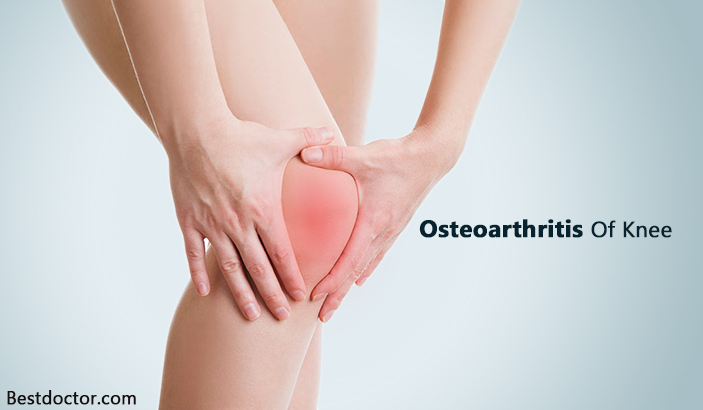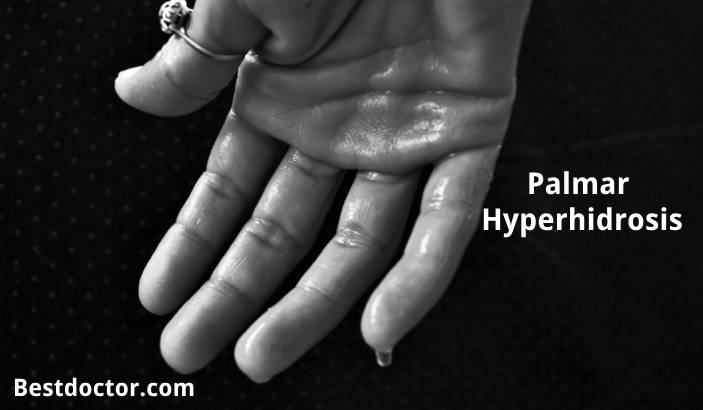What Is Osteoarthritis Of The Knee?
Osteoarthritis otherwise known as the ‘Wear and Tear’ arthritis is the problem faced when the natural soft cushioning protection between the cartilage joints wears away. As and when this happens, the joints rub against each other in the absence of the cushion, and the shock-absorbing ability of the cartilage is gone or decreased. This action of rubbing against each other results in swelling, ache, stiffness, lowered mobile ability, and at times formation of bone spurs, which is the little outgrowth of the bone. As we grow, almost everyone develops Osteoarthritis of the knee, if not to a severe level at least to some degree. But young people also may develop this problem because of any possible reason. Studies say that women are more prone to Osteoarthritis of knee compared to men.
[Also Read: Torn ACL in the knee]
Symptoms Of Knee Osteoarthritis
Osteoarthritis pain can be easily identified with the symptoms and diagnosis, however, some of those with severe pain may not show any changes in the X-ray. So, it is very much important to keep a keen look at the symptoms instead of just relying on the X-rays.
Few of the most common symptoms noticed in those suffering from Osteoarthritis of knees are;
- Pain that changes with how active you’re, more activity leads to increased pain while resting relieves the pain.
- Swelling
- Warmth sensation at joints.
- Stiff knees when you sit idle without moving, mainly in the mornings
- Decrease in the knee mobility making it hard to walk or take stairs or sit in the chairs or cars or get out of the chairs and cars.
- Very hard or almost impossible to sit down on the floor.
- Crackling sound heard when moving the knees
Causes Of Osteoarthritis Of Knee
Osteoarthritis is something considered as associated with aged people, but younger to middle age individuals also face this problem over time. However, scientists are noticing that Osteoarthritis is a disease that has some others to be considered and not just an age factor-based.
Here are a few causes of OA;
- The chances of being OA attacked increases with age as along with the years passed, the age of muscles, bones, and joints also grows.
- Any kind of break or tear in the joints can lead to OA as time passes.
- Excessive usage of joints like in some jobs or sports can result in Osteoarthritis.
- Overweight increases stress on joints causing increased chances of OA
- Weak muscles cannot give much support resulting in the mispositioning of the joints which is a cause too.
- It is also observed that OA can be hereditary too.
- Certain health illnesses like rheumatoid arthritis or metabolic disorders seem to be more likely to suffer from Osteoarthritis.
Stages Of Knee Osteoarthritis
Osteoarthritis is of 4different stages, however, one more stage is included but has nothing to be worried about.
Stage 0
It classified as Normal stage. There are no signs of Osteoarthritis and the functioning of joints is quite normal with no pain and hence needs no treatment.
Stage 1
Minor wear and tear is developed with very tiny growth of bone spurs at the joints. In this stage, there won’t be almost any discomfort or pain.
Stage 2
A mild stage wherein, X-rays show the bone spur growths and it is at this stage that one can experience some pain and discomfort irrespective of the normal space appearance at the bones.
Stage 3
Moderate stage in which the cartilage surface has some erosion and narrowed the bone gap. It is at this stage; joint stiffness increases with any kind of activity.
Stage 4
This is a severe stage, a stage where the ‘cartilage wears off at the joint becomes stiff.
How To Diagnose Osteoarthritis Of Knee?
The OA can be diagnosed in 3 steps, medical history, physical observation, and tests like lab tests and imaging tests. On your first visit to the doctor, he will inquire for you and your family medical history, symptoms if any, if the pain is affecting other activities and how is the effect, if any medication is used, and then suggest for the tests. The doctor will also look for the areas of the knee that are painful, tender, or swollen.
1. Lab Tests
- Blood test is not usually needed for Osteoarthritis, but it is helpful in ruling out any other causes of the joint pain as rheumatoid arthritis.
- Joint fluid analysis is made by inserting a needle and collecting the fluid from the joint. This fluid is tested to see if there is an infection or inflammation or if there is any gout.
2. Imaging Tests
- X-ray is taken to determine joint condition and see for bone spurs.
- MRI shows the soft tissues like cartilage and the bone. MRI is needed especially as the complexity of the OA is more.
Treatment For Osteoarthritis Of Knee
OA is an irreversible condition whereas taking treatment helps in relieving from the pain and improves the movement.
The treatment can be in different forms as;
- Medications that relieve the symptoms like pain, immobility, etc.
- Physical and Occupational therapy practices to better and simplify the OA symptoms.
- Different surgical procedures
- Osteoarthritis knee brace can be used to manage the discomfort
When Is Surgery Recommended For Knee Osteoarthritis?
Usually a doctor post-diagnosis will first suggest different medications, lifestyle changes, and natural remedies. However, if any of these practices couldn’t give relief or turn out to be of no effect over time or if you still can’t bear the symptoms even with the non-surgical methods then your doctor would suggest surgery.
Tips To Prevent Osteoarthritis Of Knee
OA happens in most cases with age. It can’t be prevented to the fullest, however, you can decrease the amount of stress on your joints by following some tips thus decreasing the chance of getting the OA condition.
- Maintaining a healthy body weight.
- Controlling the blood sugar levels.
- Creating an active lifestyle by giving room for exercise.
- Avoiding injuries to joints.
- Keep an eye on any pains that last for hours post any activity.
So maintaining a healthy lifestyle, following the tips, and paying attention to pains can avoid the Osteoarthritis of knees and its severity if affected.
Sudheendra is a passionate blogger for 8 years and holds a Degree in Journalism & Mass Communications. His writings particularly focus on health, medicine, diet & lifestyle. For him, everything that interlinks and relates to health & medical world entices him. His write-ups aim at educating people not by just giving facts but by infusing human touch.








Enhancing Your Career Opportunities with Improved Vision from LASIK Surgery in Manhattan
What Does Cloudy Urine Mean in Females and Males?
Palmar Hyperhidrosis: Understanding Causes, Symptoms, and Treatment
16 Warning Signs You Need to Go See Your Doctor As Early As Possible